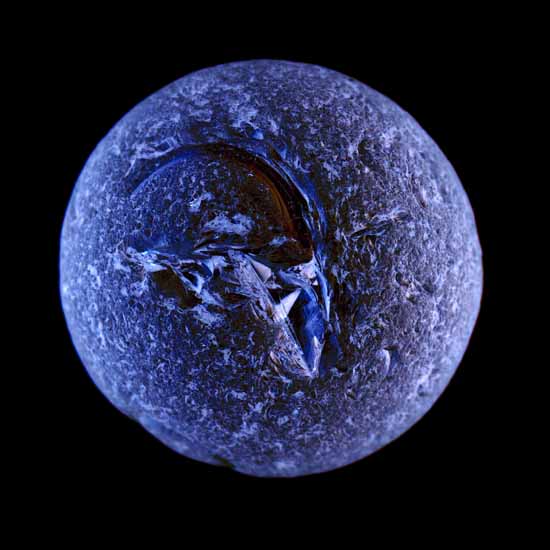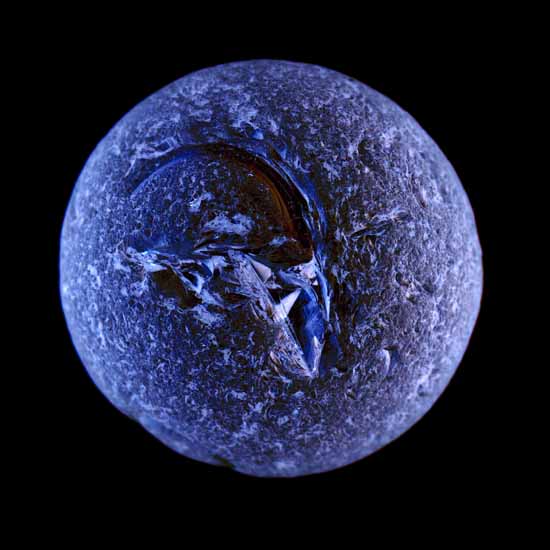
We first came across the work of Roger Coulam when he won the Shutter Hub award at this year's FORMAT International Portfolio Review Awards. His work was personally chosen as the winner by Brian Griffin, one of the patrons of the FORMAT Festival. Shutter Hub was delighted to be involved with the awards this year, and especially that the winner turned out to be a photographer with such an intriguing approach, often making his images without a camera, and crossing boundaries within the art form. We took some time to find out a little more…
Who are you?
I live and in work Sunderland in the north-east of England, trying to make a living from my images.
When did you first discover your interest in photography?
I was relatively late into photography, and didn’t get a “proper” camera until the 1990’s. I taught myself with the help of a correspondence course and through many mistakes, and by poring over endless rolls of film. Sadly self taught seem to be considered dirty words now.
Where did it go from there?
I had always been fascinated by extremes and at the time my ambition was to photograph lightning. So in 2000 I took a trip to the USA with a storm chasing team. I was lucky enough to be invited to work with them as a driver/guide and spent much of the spring months for the next seven years chasing storms in “Tornado Alley”. I was the only photographer from the UK doing this at a high level at that time, and this resulted in me being able to turn professional in 2003.
What were the best and worst parts of this?
It was amazing having a front seat view on the world’s biggest storms, but very frustrating as a photographer. My photography had to take second place after driving and my responsibilities to paying guests, and my cameras often had to stay unused. But working around violent storms forced me to keep learning and to hone my techniques so I could get images in all conditions.
How did you get from there to what you are doing now?
Around 2007 I was getting tired of the thousands of miles of driving, and also I couldn’t afford time away from my business. Digital imaging had also filled the market with fake, photo-shopped, and hyper-real pictures, so the time was right for change. Back home I had found myself just making pictures to someone else’s agenda, and this was not why I had started in photography. So I learned traditional darkroom skills, made photogravures and handmade books, and challenged myself to do something different. Camera-less photography has always fascinated me, and most of my darkroom work was geared towards this. About that time I also began making images using a flat bed scanner, loving the immediacy, the intensity of viewing, and the freedom of not having to use a lens.
What work of yours would you say best represents you and your practice?
My camera-less images are now those that define my practice and methods of thinking and working.
Your series 'A Grain of Sand' which won the Shutter Hub Award at the FORMAT International Portfolio Review Awards seems to be an exploration of unfamiliar natural forms, for example the close up view of Plankton, which appears to have been imaged through a microscope or similar device. Can you tell us some more about how you came to make these images?
A “Grain of Sand” was named after William Blake’s famous poem, and was inspired after finding a glass marble on a polluted beach. This project addresses environmental abuses in a contemporary consumer driven society. The pictures are made with small found, un-considered, or discarded objects; ranging from plastic and glass collected from landfill, to tiny scraps of plants from my own garden.
I try to create microcosms, something that encapsulates in miniature the characteristics of something larger. The pictures are intentionally seductive and inclusive of the symbolism of art history, but raise issues of beauty, fragility, and sustainability. The resulting images act as metaphors for our relationship with the nature and the planet, and our thoughtless exploitation of the environment and its finite resources, at a time when global warming threatens our species.
Your photography seems to cover a very wide range of subjects. What do you look for in your subjects and what do you find inspiring as an artist?
Until recently my work has covered a range of subjects as I am inquisitive about the world. I have always tried to develop myself as an image maker, and to challenge myself technically, and feel it’s easy just to make the same image repeatedly for years. Inspiration comes from many sources – from art, photography, literature, from whatever’s going on in my life, and more often now from objects that I find and pick up. There are so many people who feed my work, and my favourites change with the years. I spend a lot of time researching, and visit Art Galleries whenever possible; so a lot of ideas come from that. But I have a strong desire to communicate and to express myself through my pictures, and that keeps me making new work.
Where do you see yourself in 10 years time?
I am not sure where I will be next year! But it would be great to be able to develop all the ideas I have in my notebooks over the next decade. Gaining representation is also important in helping to get my work out there.
You can see more of Roger's work on his Shutter Hub profile, and find out more about his work at his website, here.
Is there someone that you’d really like to see us interview on Shutter Hub? Drop us a line and let us know!



